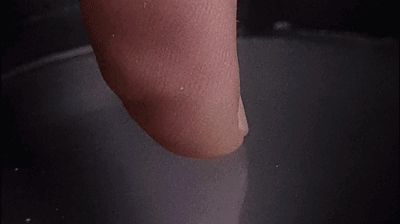Research
Safety of Kirlian effect recording
Bio-electrography should be not only safe for humans, but the electrical field that is used should not disturb the subtle processes in the body (and mind) that we try to extract the information about.
For these reasons the electrical field energy that is used to stimulate the glow should be as minimal as possible.
In modern devices (such as GDV instruments of Korotkov) this is accomplished using very short (10 nanoseconds) electrical field pulses, reducing the electrical field excitation time (to about 1 microsecond) and observing only a small part of the human body (typically one fingertip) at a time.

Safety demonstration of the electro-photonic GDV camera electrical excitation system of Prof Korotkov : human nose excited to glow
Decoding information
It is well known, that from a single drop of blood we can obtain a wealth of information about many processes that occur in the human body. In a similar fashion - stimulated electro-photonic GLOW recorded around sufficiently many fragments of the human body (typically 10 fingertips) - seems to contain information about nearly every major organ and function of human organism.
This information seems encoded in the shape and location of the electro-photonic glow.
Properties of the electro-photonic glow
There seem to be several peculiar things about this information, however. One of them is that the actual disease and the fear of that disease seem to cause very similar patterns in the electro-photonic glow. The other is that shortly after death disease indicators in the electro-photonic glow seem to disappear, even though tumors and other material aspects of the disease remain in the body.
The above seems to suggest that the information encoded in the electro-photonic Kirlian glow comes directly from our consciousness (understood as the system of processing information in life) rather than from the physical body.
Significant degree of conscious control over the Kirlian glow during meditation and various forms of concentration seems to confirm the above and indicate that our consciousness may be electro-photonic to begin with.
In 2000 prof Bunzen and his team conducted an experiment aiming to measure human reaction time. The experiment required people undergoing the test to decide if they see a summer or winter picture on the computer screen and push the appropriate button to confirm their decision. Their reaction was observed in activity of the brain with appropriate electrodes as well as an electro-photonic GDV glow around their fingertip.
Results of this experiment, presented in 2000 during an advanced workshop on GDV technology in St Petersburg, has shown that changes in the electro-photonic glow of a person during decision making seem to occur before any associated electrical activity can be detected in the brain.
This is yet another hint that our our consciousness may actually be electro-photonic.
